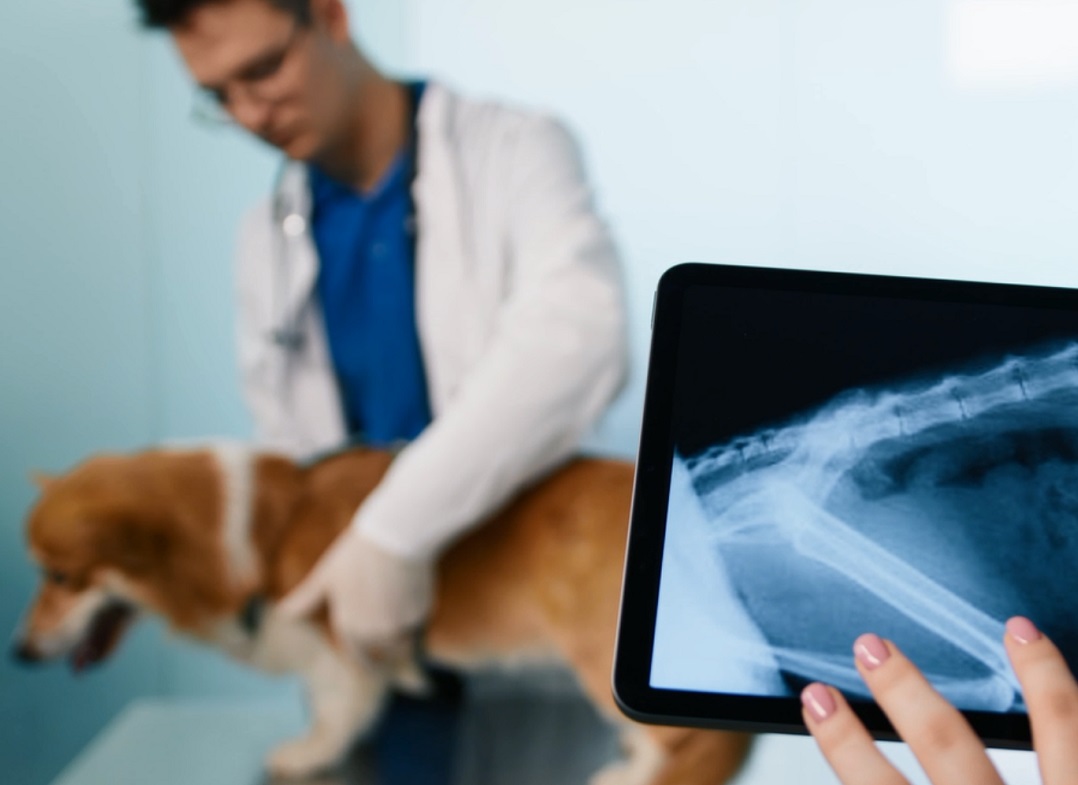- Main
- News and events
- What to do if a dog is lame: when does an orthopedic veterinarian recommend surgery?
What to do if a dog is lame: when does an orthopedic veterinarian recommend surgery?

A dog's lameness is a symptom that becomes immediately noticeable, but it can signal various pathologies and injuries. The actions of the guardian should be as follows:
- Carefully examine the paw that causes concern. You need to check if there are any cuts, bite marks, punctures, or swelling. If you see a wound, treat it with chlorhexidine and cover it with a bandage. If the paw is swollen, it is better to consult an orthopedic veterinarian immediately.
- Do not give your pet any "lameness" pills. Non-steroidal anti-inflammatory drugs only relieve pain and inflammation, but do not eliminate the problem. That is, you will only mask the symptoms, and the disease can only get worse.
- Write down all the information about the lameness for the veterinarian: on which leg, how long ago, and under what circumstances the dog limps.
An orthopedic veterinarian will help your pet. He will examine the patient and conduct a diagnosis, based on the results of which the most effective treatment method will be chosen. Now you know what to do if your dog is lame, and what you should definitely not do.
Why does the dog limp if there are no visible causes?
In addition to external injuries, there are internal injuries. For example, there could be a sprain, tear, or rupture of a ligament or muscle, or a dislocated joint or bruise from a bruise. A neoplasm could also develop in the limb.
Another common cause of lameness is a hereditary or acquired joint disease, such as dysplasia of the elbow or hip joint. Excessive stress on the joints can be caused by excess weight. In older dogs, lameness often provokes arthritis.
If you are at a loss as to what to do if your dog is lame, visiting an orthopedic veterinarian is the best solution. If a serious injury or pathological process is left untreated, the mobility of the paw may become limited in the future, meaning that the dog will limp for the rest of its life.
When to do surgery if the dog is lame?
In some cases, only surgical treatment will be effective in case of lameness. An orthopedic veterinarian prescribes surgery if the following disorders are detected during the diagnosis
- Damage to the meniscus of the knee joint - happens if the cruciate ligaments are torn.
- Bone fracture. In order to avoid improper fusion and lifelong impaired gait, surgery is necessary.
- Ligament or tendon damage. There is no drug to help restore the damaged structure. Surgery and subsequent fixation are required.
- Dislocation of the patella. It is especially common in dwarf and small breeds and occurs due to bone development abnormalities. If the pathology has reached the 4th degree, this is one of those cases when surgery is the only solution for correction.
- Dysplasia of the hip joints. The head of the femur comes out of its socket, which subsequently provokes osteoarthritis and joint destruction. If you ignore the need for surgery, other pathologies will be added in the future: osteoarthritis or dislocation of the hip bone.
- Tumor in the bone of the limb or spine. Common diagnoses are retroperitoneal hemangiosarcoma, synovial sarcoma, and spinal cord neoplasm.
As you can see, the cause of lameness is not always hidden in the limb. To identify and localize it, an orthopedic veterinarian has the necessary experience, skills, and equipment.
